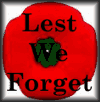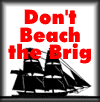CMHS Home
Constitution



|
Constitution & Amendments
A. Object
The Canadian Military Heritage Society (known after this part as the C.M.H.S. or the Society) will preserve Canadian military history by educating the public through reenacting various aspects of Canada's military past or by providing historical displays and presentations to the public.
The CMHS is divided into numerous projects, each of which act as individual display units, and are governed by the following articles of this Constitution.
B. Articles
- The directors of the CMHS shall determine policy under the advisement of the senior members of each unit.
- There shall be an Executive Committee formed from elected members of each unit.
- All decisions of the Executive Committee must be approved by majority of those members concerned before implementation.
- The Executive Committee is concerned with authenticity, health and safety, and general organization of the Society's implementation.
- The variety of projects within the Society enables individuals to form their own display units if they have no interest in existing projects. The formation of new units is subject to approval of the directors of the CMHS and/or the executive body before the admittance to the Society. The Executive Committee is to be thoroughly objective when considering a new proposal. Criterion for approval is to be based on authenticity (both military and accompanying civilian roles), health and safety procedures, and relevance to Canadian military history, dedication, as well as any other pertinent factors.
- Project Representatives are responsible for the awareness of their members concerning all regulations passed by the Governing Body, including authenticity and safety.
- There will be yearly safety and authenticity reviews for all units and their members.
- All monetary donations for projects in the Society must be made to the Society itself with proper notification for which project the money, as the unit in whole intended.
- There will be a yearly membership fee to be paid by all members of the CMHS to cover such costs as insurance, social publications, organizational costs, etc. Said fees are not to profit the Society, since it is a non-profit organization, but may increase said fees to the rising costs of insurance, etc.
- Each project may add an additional fee depending on its means
- The Society will levy membership dues according to financial needs of the Society.
- All members of the Society will be notified of all decisions of the Executive Committee by their project representative.
- Any member or unit found in conflict with any CMHS safety or authenticity rules will be subject to disciplinary action or probation or expulsion as deemed applicable by the Executive Committee.
- The Society shall be dissolved if a majority of members deem it necessary or if a majority of the CMHS Executive Committee members so deem it.
- The Projects presently recognized within the CMHS are as follows:
- 49th Regiment of Foot, 2nd Co., 1st Batt. (War of 1812)
- Princess Patricia's Canadian Light Infantry (WW1)
- Princess Patricia's Canadian Light Infantry (WW2)
- Royal Canadian Air Force
- Mobile Museum
- The CMHS may conduct special educational programs, when permitted, at historical sites to assist the site with on going programs. These special projects include Grand Encampments, Military reenactments, School of Music, Artillery and Infantry Schools at Historic Fort Erie, Garrison Weekends, and Air Shows.
- The CMHS will also conduct lectures when possible at local Public and Separate Schools and Secondary Schools to assist with their history curriculum.
C. By-Laws
Membership
Society Membership
The CMHS is open to all persons, in accordance to both the Canada and Ontario Charters of Human Rights. Society membership is limited, however, to the ability of a person to pay unit dues, CMHS fees, as well as his/her applicability to unit membership standards. All new members shall be on probation for a period of one (1) year beginning on the first day of their membership. There will be no exception to this rule. Such probationary period is applicable to all units (projects) in the CMHS and neither race, creed, sex, education, historical experiences or previous reenactment experience absolves any new member of said one (1) year probationary period. Upon completion of said probation, the Executive Committee will review the applicant to ensure that he/she complies with all safety and authenticity regulations (Article B - 3). At which point the applicant's status could change to permanent member. Should the applicant not meet with Societal safety and authenticity regulations, the applicant will either remain on probation with suggestions on how and what improvements should be made, or application for membership will be terminated.Unit Membership
Individual units are required to publish both the dues, which will be levied, as well as any requirements, which must be met by prospective members. The Society requires that membership be based solely on historical authenticity; it is not a matter of racial or gender discrimination, but of historical authenticity.
- Field units are required to follow strict authenticity guidelines. There is no record of women officially serving in either the British or Canadian Armies in North America prior to the First World War. Therefore, the CMHS will not be able to allow women serving in the ranks of any field unit. The exception to this rule may be if a woman can prove to the Executive Committee her dedication to maintaining the credence of history, i.e.: they must look, dress, drill, and act as per their male counterpart. The decision of the Executive Committee is final. Each application is to be considered separately, and any decision to allow a woman to serve in the ranks as a male in a field unit is not to be misconstrued as a blanket acceptance of women in the ranks of any field unit in the Society.
- Campfollowers (i.e.: women and children) were part of the 18th and 19th Century armies which were encumbered with large camps of women and children. It is historically accurate, therefore, to allow women and children upon the 'battlefield', though not in an active nature (refer to By-Law 1-A). Depending upon the printed requirements of each individual unit, women and children portray the lifestyles of the period of their unit.
Discipline, Order and Authenticity
Battlefield Regulations: Contain regulations on the following points;
- Matter of inter-unit discipline (i.e.: how and when).
- The use of black powder weapons on and off the display field.
- The use of bladed weapons on and off the display field.
- The use of animals and related equipment on and off the display field.
Camp Regulations: Contains regulations on the following points;
- Prohibition of modern articles during CMHS gatherings or period events.
- Uses of alcohol, drugs or other controlled substances in camp.
- The use of bladed weapons on and off the display field
- The use of animals and related equipment on and off the display field.
- The use of profane language not acceptable by public standards.
Authenticity RegulationsAre less easily coordinated as requirements for different periods vary. The Executive Body shall print a booklet for relevant periods at the time they become necessary. Generally, when applying for membership as a unit, an applicant must present its own evidence of their own authenticity, which the Executive Body may choose to dispute or accept after references to proper sources.Unit Booklets:Shall be published by each unit as a guide to conduct and discipline for each member of the unit. They shall supplement the Camp and Field Regulations published by the CMHS Executive Body.
Executive Positions
Executive Body:The executive Body of the CMHS operates as a democratic body. No position is of absolute power. Executive members should never be dictatorial, but must be selflessly and objectively motivated to make decisions and implement policies, which best serves, the CMHS and its members. Executive members hold their position until they withdraw, at which time a replacement is chosen and voted in by the remaining Executive members. An Executive member will serve for four (4) years. When the membership of the CMHS includes 20 or more members, an annual vote will be conducted for the Executive Body.Voting Procedure Within the Executive:Each member of the executive shall have one vote and the majority rules on any given issue. The Executive Body should be present at all CMHS meetings, especially, when major decisions regarding policy, safety, authenticity, event participation, etc., are being discussed. All views must be presented in a democratic fashion. Where there is a dispute, then the final decision will be made by a vote within the members of the CMHS. Members of the CMHS may vote only at general meetings.Unit Executives:The Representatives of the individual units are selected by the members of that unit. What matters are to be voted upon, and how, are at the discretion of these unit representatives.
|



